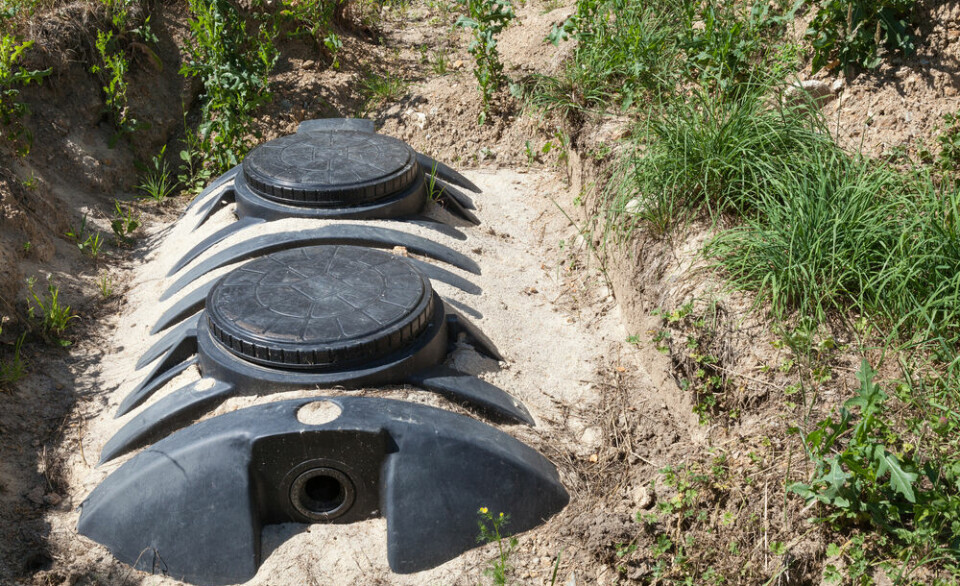France ranks lower compared to universities included from the Anglophone world in the Shanghai Ranking – an annual report of the world’s best education institutions released each August.
The list is seen as one of the most reliable rankings of the world’s most prestigious research universities, with Harvard ranked first for the 23rd year in a row this year.
It is dominated by English-language universities with elite US and UK institutions occupying the top 11 spots, and the vast majority in the top 50.
The first French university to make the list is Paris-Saclay, ranked 12, a research university known for its STEM (Science, Technology, Engineering and Maths) programmes, which can count 11 Fields medallists and three Nobel Prize winners amongst its alumni.
It is one of only two university from continental Europe to rank in the top 30 (the other being Switzerland's ETH Zurich).
In fact France only has four universities in the top 100.
The Paris University of Sciences and Letters ranks 33, the Sorbonne 41, and Université Paris Cité 60.
University’s language is a key factor
There are a number of factors which contribute to these rankings. Outside of China, which is seen to have a financial and demographic advantage, the English language is a common denominator between high ranking countries.
Germany, which has a higher population than France and an equally strong reputation in the world of physics and engineering, also only has four institutions in the top 100 rankings, only one of which is in the top 50.
One of the Shanghai Ranking’s main criteria is the number of lecturers and alumni with worldwide recognition in their fields.
This includes current and former members of the universities winning awards such as Nobel Prizes, Fields medals or having highly cited papers – a high number of publications in English is mandatory for schools to be recognised.
Joint research from the universities of Queensland and California has shown that academics with English as their first language have a significant advantage over others in their careers, regardless of the latter's proficiency in English as a second or third language.
However all four French universities listed in the top 100 have climbed up in the rankings compared to 2023, some by as many as eight spots.
Why France’s Grandes Écoles play a big part
The most likely explanation for France’s poor showing in the ranking is the fact that many of France’s top institutions are not considered universities.
France has 72 Nobel Laureates, Australia has 12, but all of Australia’s 12 laureates were university alumni. That is not the case in France.
The best example is France’s latest Nobel Prize winner in Physics, Alain Aspect in 2022.
Pr. Aspect graduated from the École Normale Supérieure of Cachan, earned his PhD at the École Supérieure d’Optique, and went on to become the latter’s deputy director, as well as a teacher at the École Polytechnique.
None of these schools are considered universities, and therefore do not make the Shanghai Ranking. Instead, they are Grandes Écoles, schools that are highly selective and specialised in their fields.
In a majority of cases, these institutions are not open to high school graduates, with applicants expected to have first completed another highly selective two-year course: the classes préparatoires.
This system runs parallel to universities, which results in many of the best academics choosing Grandes Écoles instead of universities.
In fact, France’s highest placed university in the Shanghai Ranking, Paris-Saclay, owes its inclusion mainly to the Grande École which is attached to it.
If the Grandes Écoles are included then France has some of the world's strongest educational facilities.
The École Normale Supérieure of Ulm has 14 Nobel Prize laureates, the highest proportion among alumni of any institution in the world.
It does not have a true undergraduate programme, however, and therefore does not qualify for the Shanghai Ranking.
The Grandes Écoles system has repeatedly been criticised as elitist as it is impossible to access without very high grades in secondary school.
In France most pupils go to their local schools. As a result the quality of secondary education is closely linked to the wealth of individual neighbourhoods.
Children from working class families comprise only 7% of classes préparatoires, and less than 2% of Grandes Écoles such as École Normale Supérieure.
Conversely, French universities are very accessible, with annual fees of €271 and grants for students with low family incomes. However such accessibility means they struggle to match the prestige of the Grandes Écoles.
France is uniquely unfit for the Shanghai Ranking
Another factor is that France’s public universities – those that would qualify for the Shanghai Ranking – are often favoured for social sciences, history, philosophy, literature and foreign languages and not scientific subjects.
The Shanghai Ranking does not indicate a university’s overall quality of teaching but rather its contribution to research in STEM fields and not for humanities.
France ranks better if looking at global rankings in other fields of study, where the Sorbonne can rank first.
So whereas the French higher education system looks unsuited for the Shanghai rankings this does not show the full picture.
STEM students in France have a number of prestigious establishments from which to choose such as the Polytechnique, École Normale Supérieure, Centrale, and Mines, none of which qualify for the Shanghai rankings because they are not classed as universities.
For political sciences and economics, universities also compete with Grandes Écoles; Sciences Po, HEC and INSP (formerly known as ENA) being considered more prestigious.
Thus the Grande École STEM, business and political science courses require students to have excellent grades as early as high school as this is the most reliable way to access a classe préparatoire, and then a Grande École.
This system (and the achievements of Grande École alumni), although catering to a small elite of students, suggests that French higher education is worthy of a high world ranking, as demonstrated by Université Paris-Saclay’s presence at number 15 in the Shanghai rankings.
Read more: France aspires to take helm as leading European country in healthcare

























